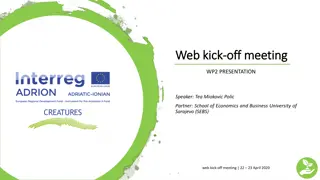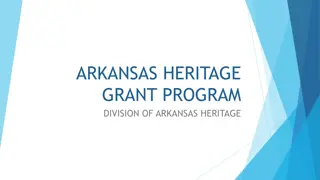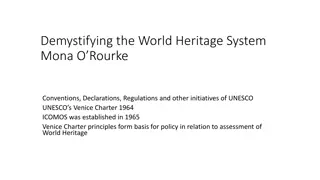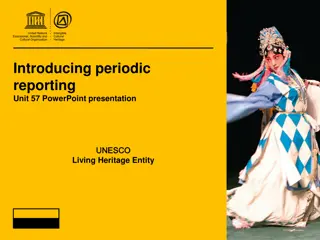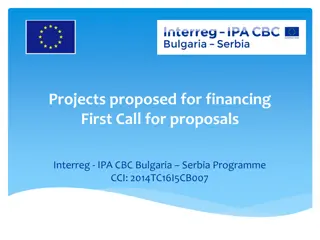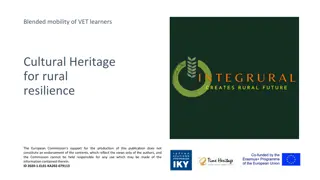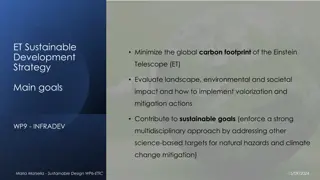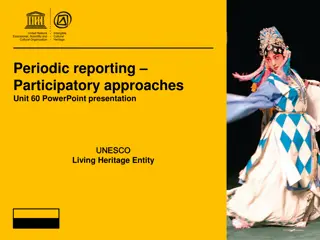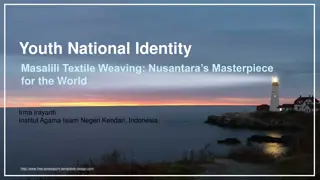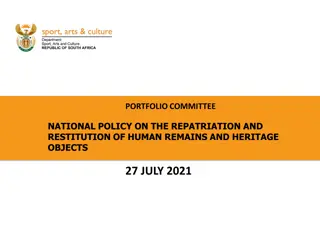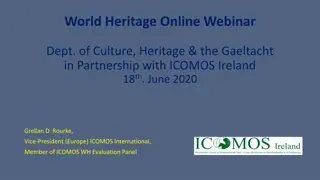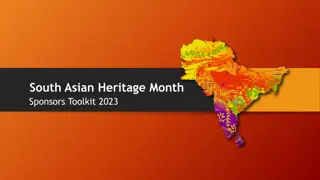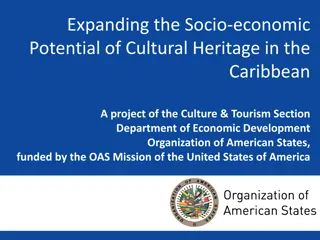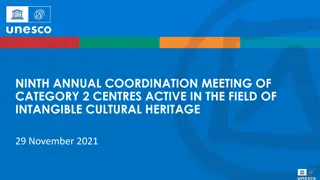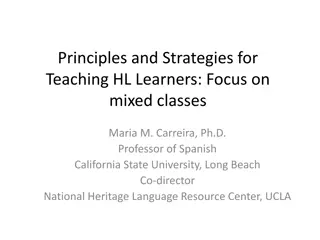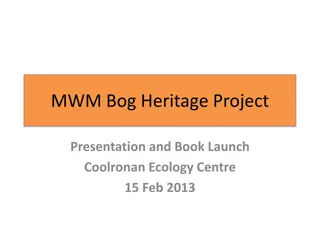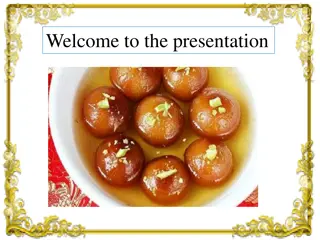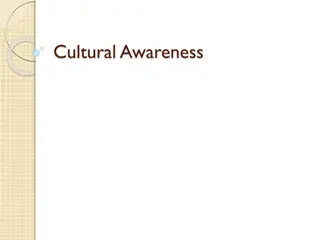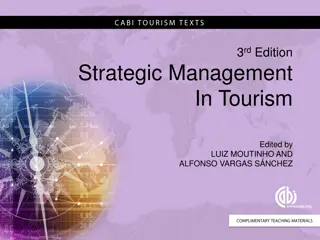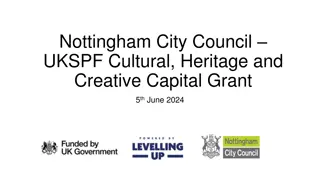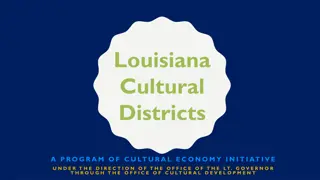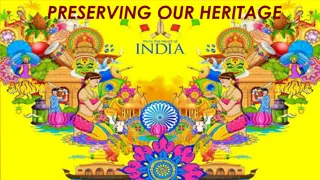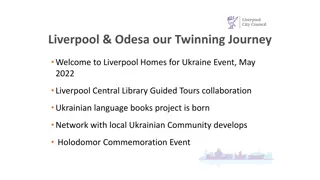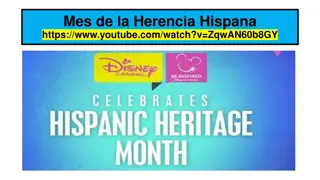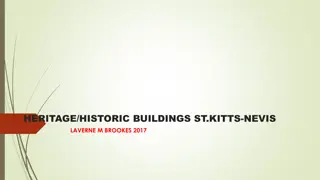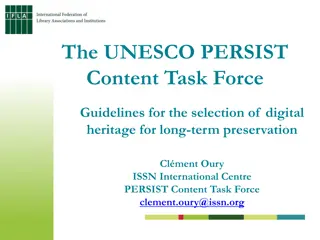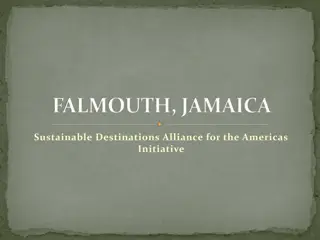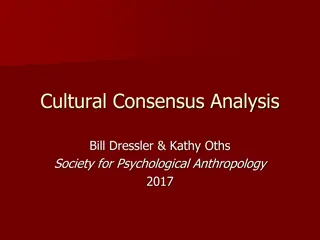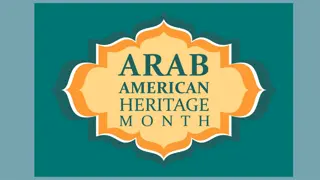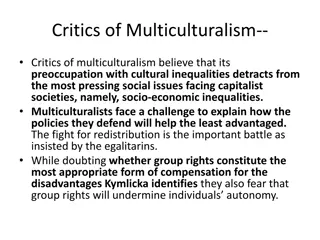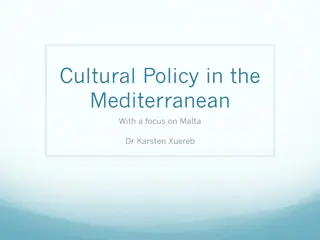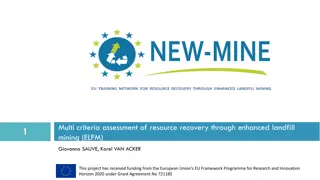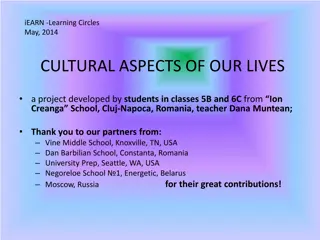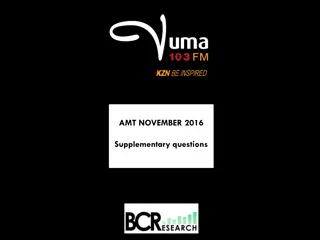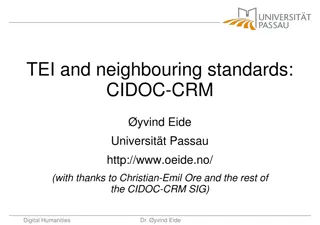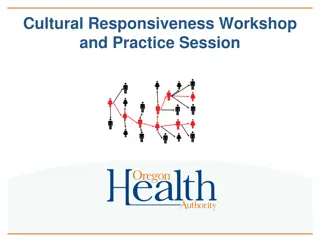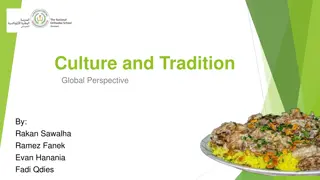Understanding Sustainable Valorization of Gastronomic Cultural Heritage Resources
This training course focuses on the sustainable valorization of foods within the gastronomic cultural heritage (GCH) territory. It covers basic concepts, best practices, and guidelines for increasing the value of goods and knowledge transfer to beneficiaries. The project phase involves the identification and mapping of GCH valorization, with a particular emphasis on Slow Food's approach to valorization and the involvement of four clusters. Slow Food promotes the valorization of food products based on their quality and risk of disappearance. The course aims to enhance understanding and implementation of valorization strategies.
Download Presentation

Please find below an Image/Link to download the presentation.
The content on the website is provided AS IS for your information and personal use only. It may not be sold, licensed, or shared on other websites without obtaining consent from the author. Download presentation by click this link. If you encounter any issues during the download, it is possible that the publisher has removed the file from their server.
E N D
Presentation Transcript
TRAINING COURSE IN GCH RESOURCES VALORISATION
Training course in GCH resources valorization Course aims and project phase Valorization: what does it mean? Slow Food s approach to Valorization How to Valorize: 4 Clusters
Course aims The training aims to provide basic concepts, best practices and guidelines for the sustainable valorisation of foods that are part of the gastronomic cultural territory heritage (GCH) of a
Project phase This is the second phase in the development of the project Slow Food-CE We are here IDENTIFICATION/ MAPPING OF GCH VALORISATION OF GCH PILOT ACTION TRANSNATIONAL STRATEGY WPT2 WPT3 WPT1 WPT4
Training course in GCH resources valorization Course aims and project phase Valorization: what does it mean? Slow Food s approach to Valorization How to Valorize: 4 Clusters
Valorisation: what does it mean? All the techniques techniquesand methodologies increase the value of a given good and the management and promotion mechanisms management and promotion mechanisms through which this value can be transmitted to beneficiaries. Valorisation is also education education that serve to increase knowledge and, consequently, increasing the ability of beneficiaries to benefit from these goods. methodologiesthat Objects of valorization can be: Material Material goods goods Immaterial Immaterial goods goods (traditions, know-how )
Training course in GCH resources valorization Course aims and project phase Valorization: what does it mean? Slow Food s approach to Valorization and projects How to Valorize: 4 Clusters
Slow Food approach to Valorisation What should be valorized? 2 main criteria for a food product 1. GOOD 2. AT RISK OF DISAPPEARANCE
Slow Food approach to Valorisation What elements are involved in this valorization process? Success factors Key element Actors Education Technical skills, Communication skills (storytelling) Networking with other producers Community The Product Producers faces Production area Cultural aspects Slow Food = process facilitator Producers = main actor Consumers = co-producers
Training course in GCH resources valorization Course aims and project phase Valorization: what does it mean? Slow Food s approach to Valorization and projects How to Valorize: 4 Clusters
How to valorise Best practices Projects which are examples od valorisation of GCH. Developed by Slow Food, their methodologies and tools can be used to develop the pilot actions Clusters have been identified in order to group the different initiatives and activities that are possible in the attempt to valorise cultural heritage PUBLIC MARKETS EARTH MARKET COOKS AND CHEFS CHEFS ALLIANCE SUSTAINABLE TOURISM SLOW FOOD TRAVEL EDUCATION SLOW FOOD EDUCATION
Public Markets What is their role in the valorisation of GHC? Direct sell (from producers to consumers) Urban communities meet farmers Specific High Quality products Multifunctionality selling, buying, meeting, exchanging knowledge, training, testing, networking, making community
Cooks and chefs What is their role in the valorisation of GHC? create relationships of mutual understanding and collaboration with small-scale, local, sustainable food producers; promote sustainability in food consumption by informing consumers on biodiversity, food environmental footprint, sustainable farming and fishing, responsible meat consumption, etc.
Sustainable tourism What is its role in the valorisation of GHC? Make optimal use of environmental resources, maintaining essential ecological processes Conserve natural heritage and biodiversity Respect the socio-cultural authenticity of host communities Ensure viable, long-term economic operations, providing socio-economic benefits to all stakeholders that are fairly distributed
Education What is its role in the valorisation of GHC? Recognise cultural and ecosystemic heritage as common goods that need to be valorised and transmitted. Increase awareness on the sustainable use of cultural heritage Increase the sense of belonging to the cultural heritage, developing projects that promote emotional connections and cultural assimilation through the valorisation of the different elements of a territory Develop and promote networks that include schools, public authorities, cultural institutions and the territory in which they operate Develop reflective and experiential journeys focused on understanding territories as a diffused cultural good


